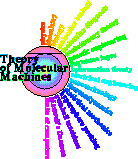Nucleic Acids Research,
Volume 25, Issue 24: Dec 15 1997.
Pages 4994-5002
Information analysis of Fis binding sites
Paul N. Hengen1, Stacy
L. Bartram1,2, Lisa E. Stewart1
and Thomas D. Schneider1
1Laboratory of Mathematical Biology, National Cancer Institute,
Frederick Cancer Research and Development Center, PO Box B, Building 469,
Room 144, Frederick, MD 21702-1201, USA and 2Middletown
High School, 200 High Street, Middletown, MD 21769, USA
ABSTRACT
Originally discovered in the bacteriophage Mu DNA inversion system gin,
Fis (Factor for Inversion Stimulation) regulates many genetic systems. To
determine the base frequency conservation required for Fis to locate its
binding sites, we collected a set of 60 experimentally defined wild-type
Fis DNA binding sequences. The sequence logo for Fis binding sites showed
the significance and likely kinds of base contacts, and these are consistent
with available experimental data. Scanning with an information theory based
weight matrix within fis, nrd, tgt/sec and gin
revealed Fis sites not previously identified, but for which there are published
footprinting and biochemical data. DNA mobility shift experiments showed
that a site predicted to be 11 bases from the proximal Salmonella typhimuriumhin
site and a site predicted to be 7 bases from the proximal P1 cin
site are bound by Fis in vitro. Two predicted sites separated by
11 bp found within the nrd promoter region, and one in the tgt/sec
promoter, were also confirmed by gel shift analysis. A sequence in aldB
previously reported to be a Fis site, for which information theory predicts
no site, did not shift. These results demonstrate that information analysis
is useful for predicting Fis DNA binding.
The original versions are at
Oxford University Press
Nucleic Acids Research.
See the companion paper:
Molecular Flip-Flops Formed by Overlapping Fis Sites.


Schneider Lab
origin: 1997 Dec 16
updated:
2008 May 19

![]()
![]()
![]()